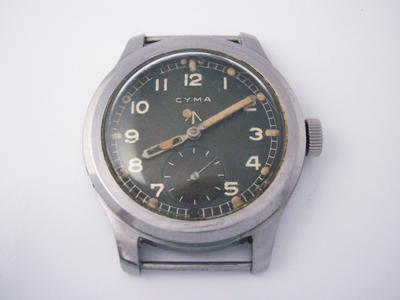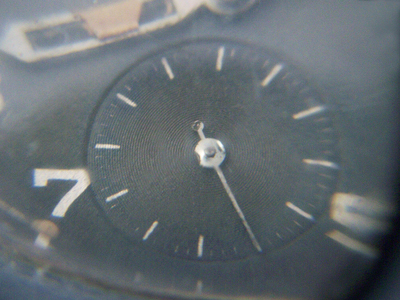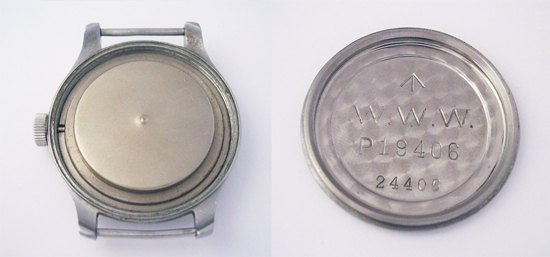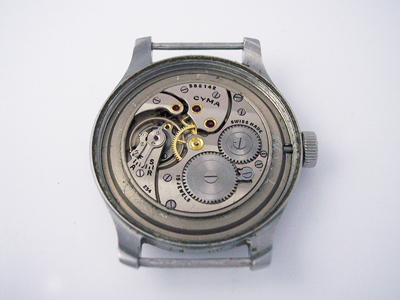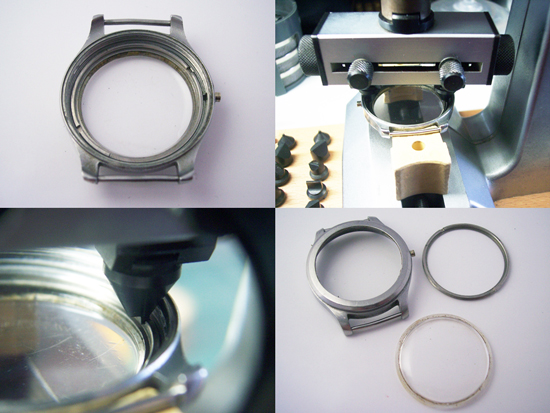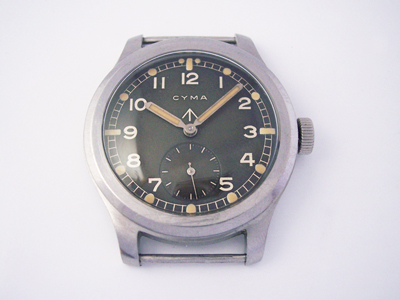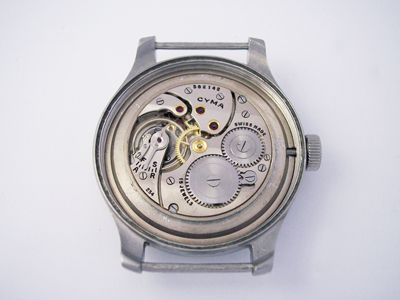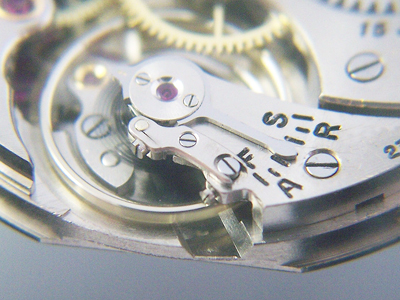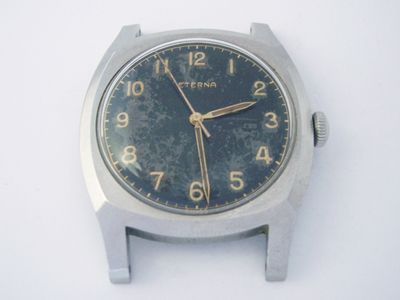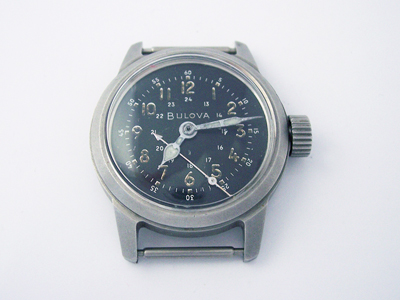This time it’s a Cyma W.W.W., another of the watches produced for the British Military.
(Click pictures to enlarge)
The abbreviation “W.W.W” stands for “Watch Wristlet Waterproof” which is used specifically to identify this style of watch. In the early 1940’s the British Ministry Of Defence issued a new specification for wristwatches for use by military personnel and Cyma were one of twelve manufacturers who submitted watches that were accepted for military use, the others being; Vertex, IWC, JLC, Grana, Timor, Longines, Omega, Buren, Eterna, Lemania and Record.
Together these watches are known as the “Dirty Dozen” by military watch enthusiasts and collecting an example of all twelve is difficult as some were only made in small numbers. Here is one such set belonging to a military watch collector in the US.
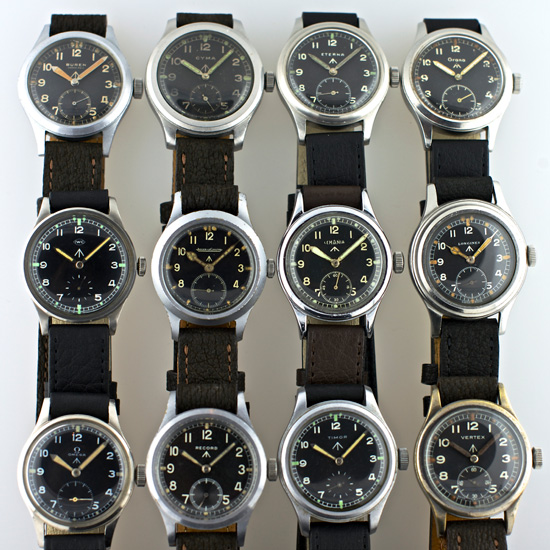
The Cyma, as you can see in the picture above, is the largest of the set at 38mm and is one of the models with a solid steel case. Most of the watches had plated cases which makes finding a full set all in good condition more difficult.
As you can see in the first picture, the watch arrived in a pretty scruffy state with the lume scattered all over the dial. The watch did tick, albeit weakly, and judging by the condition of the sub-second hand which had obviously been very clumsily removed in the past, I was curious about the condition of the movement.
As is common to many military watches, the movement is protected by an anti-magnetic dust cover and the military markings are engraved on both sides of the caseback.
Once inside, I was quite relieved to find that the movement, a 15 jewel Cyma cal. 234 was intact and in relatively good order. It obviously hadn’t been serviced for a long time but everything was present and correct.
Many of the calibres used in military watches are good quality and this one is no exception. The edges of the plates are bevelled, the train wheel and anchor jewels are all mounted in chatons and the movement plates are decorated with broad geneva stripes. (The dial side of the main plate is also decorated with perlage.)
As you can also see in the first picture, the case was very dirty and a lot of dirt had built up between the crystal and case. The crystal would need to be removed before the case could be cleaned in the ultrasonic tank.
Similar to the Nivada Grenchen Depthmaster which I wrote about a couple of years ago, the crystal in this watch is held in place by a securing ring screwed into the inside of the case. As these rings are rarely removed, typically only when the crystal gets damaged, the securing ring can be very difficult to remove – a bench mounted case opener is the best way to tackle the job.
The lume on the dial and hands was in particularly poor shape and there was no option but to remove it all and renew it, this time in a vintage beige/brown similar to the original.
With the case cleaned and crystal polished, the movement serviced and the re-luming work done, the final job was to repair the sub-second hand before the watch could be rebuilt. Here is it all back in one piece.
One final point to note about the calibre in this Cyma is that it has an unusual fine regulating mechanism mounted on the balance cock.
Rather than moving the regulator arm back and forth as in most micro-adjusters, this system moves the pinning point back and forth, effectively moving the hairspring between the curb pin and boot of the regulator, increasing or decreasing its effective length.
The mechanism pivots around the small screw in the centre with the hairspring pinning point on the left hand side. The large screw on the right (the screw next to the ‘F’) is eccentric and turning it moves the pinning point in and out. Once the timekeeping has been regulated successfully, the small screw of the side of the balance cock locks the eccentric screw in place.
It is certainly an unconventional mechanism and I believe it is unique to this calibre.
Rich.
** Many thanks to Kai Chew for letting me feature his watch on the blog. **

